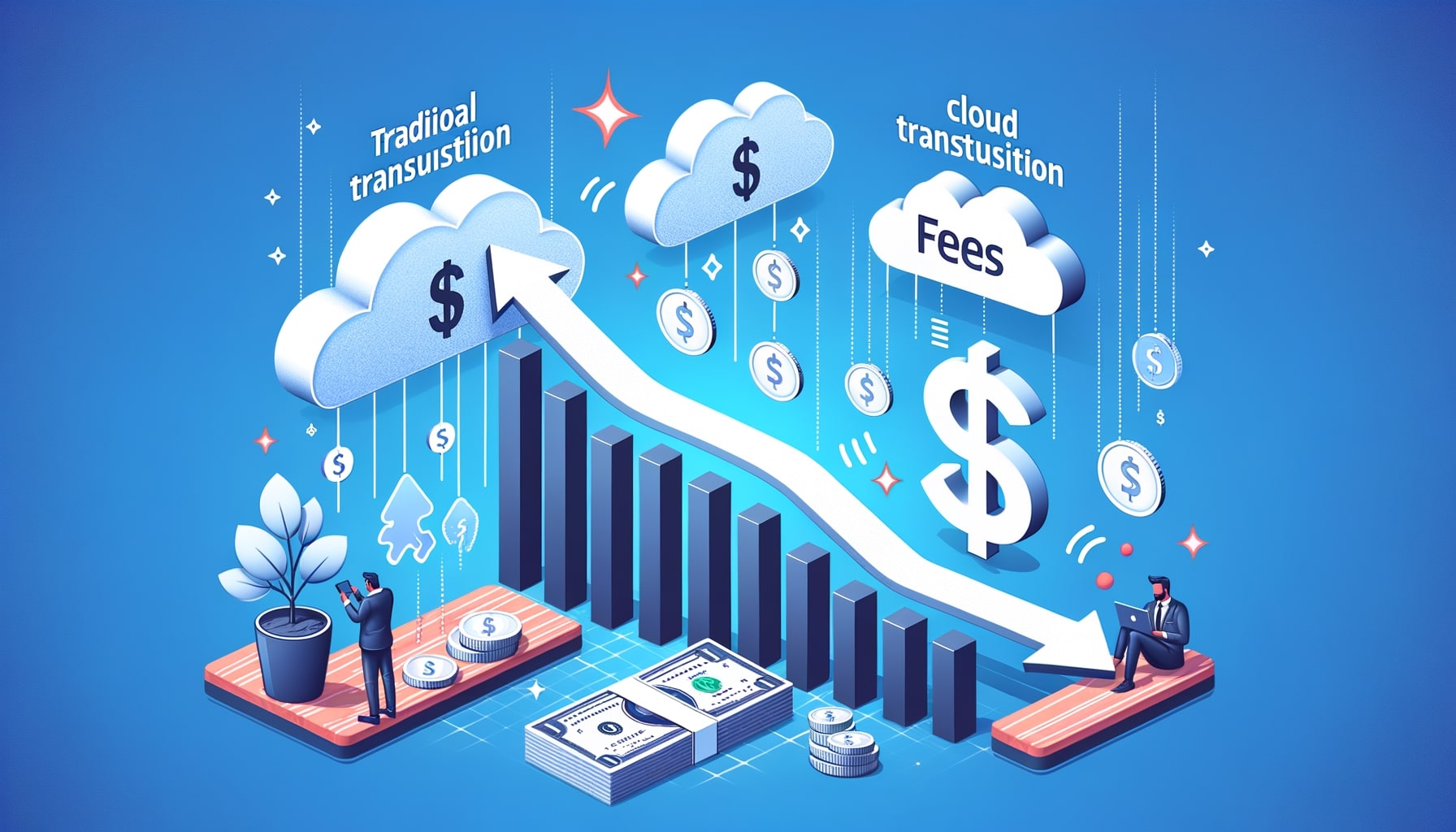How Cloud Payments Can Improve Cash Flow Management
Cash flow management is a critical aspect of running a successful business. It involves monitoring, analyzing, and optimizing the movement of cash in and out of a company. Effective cash flow management ensures that a business has enough liquidity to meet its financial obligations, such as paying suppliers, employees, and other expenses. It also helps in identifying potential cash shortages and taking proactive measures to address them.
For businesses of all sizes, cash flow management can be a complex and time-consuming task. However, with the advent of cloud technology, managing cash flow has become more efficient and streamlined. Cloud payments, in particular, have emerged as a game-changer in this domain. In this comprehensive guide, we will explore what cloud payments are, how they work, and the benefits they offer for cash flow management.
What are Cloud Payments and How Do They Work?

Cloud payments refer to the process of making and receiving payments using cloud-based platforms or software. Instead of relying on traditional payment methods like cash, checks, or wire transfers, cloud payments leverage the power of the internet and cloud computing to facilitate secure and convenient transactions. These payments can be made from anywhere, at any time, using various devices such as computers, smartphones, or tablets.
Cloud payment solutions typically involve the use of payment gateways, which act as intermediaries between the buyer, seller, and financial institutions. When a customer initiates a payment, the payment gateway securely collects the necessary information, such as credit card details, and transmits it to the relevant financial institution for authorization. Once the payment is approved, the funds are transferred from the buyer’s account to the seller’s account.
Benefits of Cloud Payments for Cash Flow Management
Implementing cloud payment solutions can bring numerous benefits to cash flow management. Let’s explore some of the key advantages:
- Improved Cash Flow Visibility: Cloud payment platforms provide real-time visibility into cash flow, allowing businesses to monitor incoming and outgoing payments more effectively. This visibility enables timely decision-making and helps in identifying potential cash flow gaps or surpluses.
- Faster Payment Processing: Cloud payments are typically faster than traditional payment methods. With instant authorization and settlement, businesses can receive payments quickly, reducing the time between invoicing and cash inflow. This accelerated payment processing can significantly improve cash flow and working capital management.
- Enhanced Security: Cloud payment solutions employ robust security measures to protect sensitive financial information. Encryption, tokenization, and other security protocols ensure that payment data is transmitted and stored securely. This reduces the risk of fraud and unauthorized access, providing peace of mind to both businesses and customers.
- Cost Savings: Cloud payments can help businesses save costs associated with manual payment processing, such as printing and mailing invoices, handling checks, and reconciling accounts. By automating payment processes, businesses can reduce administrative overheads and allocate resources to more value-added activities.
- Increased Customer Satisfaction: Cloud payment solutions offer convenience and flexibility to customers, allowing them to make payments using their preferred methods, such as credit cards, digital wallets, or bank transfers. This convenience enhances the overall customer experience and can lead to higher customer satisfaction and loyalty.
Implementing Cloud Payment Solutions: A Step-by-Step Guide
Implementing cloud payment solutions requires careful planning and execution. Here is a step-by-step guide to help businesses navigate the implementation process:
- Assess Current Payment Processes: Before adopting cloud payment solutions, businesses should evaluate their existing payment processes and identify pain points or inefficiencies. This assessment will help in determining the specific requirements and objectives for implementing cloud payments.
- Define Objectives and Key Performance Indicators (KPIs): Clearly define the objectives of implementing cloud payments, such as improving cash flow, reducing payment processing time, or enhancing customer experience. Establish relevant KPIs to measure the success of the implementation and track progress over time.
- Research and Select a Cloud Payment Provider: Conduct thorough research to identify reputable cloud payment providers that align with your business requirements. Consider factors such as security, scalability, integration capabilities, pricing, and customer support. Request demos and evaluate the features and functionalities offered by different providers before making a decision.
- Plan for Integration: Determine how the cloud payment solution will integrate with your existing systems, such as accounting software, customer relationship management (CRM) tools, or e-commerce platforms. Ensure that the chosen provider offers seamless integration options and provides support during the integration process.
- Train Employees: Provide comprehensive training to employees who will be involved in using and managing the cloud payment solution. Familiarize them with the features, functionalities, and security protocols to ensure smooth adoption and minimize errors.
- Test and Pilot: Before fully implementing the cloud payment solution, conduct thorough testing and pilot programs to identify and address any potential issues or challenges. This testing phase will help in fine-tuning the system and ensuring its compatibility with your business processes.
- Rollout and Monitor: Once the cloud payment solution is implemented, closely monitor its performance and gather feedback from users. Continuously assess the impact on cash flow management and make necessary adjustments to optimize the system’s effectiveness.
Choosing the Right Cloud Payment Provider: Factors to Consider
Selecting the right cloud payment provider is crucial for successful implementation and efficient cash flow management. Here are some key factors to consider when choosing a provider:
- Security: Ensure that the provider follows industry-standard security protocols, such as PCI DSS compliance, encryption, and tokenization. Look for additional security features like fraud detection and prevention mechanisms to safeguard your business and customer data.
- Scalability: Consider the scalability of the cloud payment solution to accommodate your business’s growth and changing needs. The provider should offer flexible pricing plans and the ability to handle increasing transaction volumes without compromising performance.
- Integration Capabilities: Assess the provider’s integration capabilities with your existing systems, such as accounting software, CRM tools, or e-commerce platforms. Seamless integration will streamline payment processes and eliminate the need for manual data entry or reconciliation.
- Payment Methods and Global Reach: Evaluate the payment methods supported by the provider and ensure they align with your customers’ preferences. Additionally, if your business operates globally, consider the provider’s ability to process international payments and support multiple currencies.
- Reporting and Analytics: Look for robust reporting and analytics capabilities offered by the provider. Detailed transaction reports, cash flow forecasts, and customizable dashboards will provide valuable insights for effective cash flow management and decision-making.
Integrating Cloud Payments with Existing Systems: Best Practices
Integrating cloud payments with existing systems is a critical step in maximizing the benefits of this technology. Here are some best practices to ensure a seamless integration process:
- Define Integration Requirements: Clearly define the integration requirements and objectives, such as automating payment reconciliation, synchronizing customer data, or updating inventory levels. This clarity will help in selecting the appropriate integration methods and tools.
- Choose the Right Integration Method: Depending on your business needs and the capabilities of your existing systems, choose the most suitable integration method. Options include application programming interfaces (APIs), pre-built connectors, or custom integration solutions.
- Collaborate with IT and Finance Teams: Involve your IT and finance teams throughout the integration process. Their expertise will be invaluable in assessing technical feasibility, ensuring data accuracy, and addressing any potential security or compliance concerns.
- Test and Validate: Conduct thorough testing and validation of the integration to ensure data integrity and system compatibility. Test various scenarios, such as payment processing, data synchronization, and error handling, to identify and resolve any issues before going live.
- Monitor and Optimize: Continuously monitor the integrated systems and gather feedback from users to identify areas for improvement. Regularly assess the impact on cash flow management and make necessary adjustments to optimize the integration’s effectiveness.
Enhancing Cash Flow Management with Cloud Payment Analytics
Cloud payment analytics provide valuable insights into cash flow patterns, trends, and potential risks. Leveraging these analytics can significantly enhance cash flow management. Here are some ways to utilize cloud payment analytics effectively:
- Cash Flow Forecasting: Use historical payment data and advanced analytics tools to forecast future cash flows accurately. This forecasting capability enables businesses to anticipate cash shortages or surpluses and take proactive measures to optimize cash flow.
- Payment Trend Analysis: Analyze payment trends, such as payment delays, customer preferences, or seasonal variations, to identify patterns and potential areas for improvement. This analysis can help in optimizing payment terms, streamlining collections, or implementing targeted marketing strategies.
- Risk Assessment: Utilize cloud payment analytics to identify potential risks, such as late payments, chargebacks, or fraudulent transactions. Early detection of these risks allows businesses to implement preventive measures and mitigate potential cash flow disruptions.
- Customer Behavior Analysis: Analyze customer payment behavior, such as preferred payment methods or payment frequency, to tailor payment options and improve customer satisfaction. This analysis can also help in identifying high-value customers and implementing personalized retention strategies.
Common Challenges and Solutions in Cloud Payment Implementation
While cloud payment implementation offers numerous benefits, businesses may encounter certain challenges during the process. Here are some common challenges and their solutions:
- Security Concerns: Businesses may have concerns about the security of cloud payment solutions. To address this, choose a reputable provider with robust security measures in place. Conduct regular security audits and educate employees about best practices for data protection.
- Integration Complexity: Integrating cloud payments with existing systems can be complex, especially if the systems are outdated or lack compatibility. Engage experienced IT professionals or consider working with integration specialists to ensure a smooth integration process.
- Employee Resistance: Employees may resist adopting new payment processes due to fear of change or lack of training. To overcome this, provide comprehensive training and communicate the benefits of cloud payments, such as time savings and improved efficiency.
- Compliance and Regulatory Requirements: Ensure that the chosen cloud payment solution complies with relevant industry regulations, such as PCI DSS for handling credit card data. Stay updated with changing regulations and work closely with the provider to address compliance requirements.
Frequently Asked Questions (FAQs) about Cloud Payments for Cash Flow Management

Q.1: What is the difference between cloud payments and traditional payment methods?
Cloud payments leverage the internet and cloud computing to facilitate secure and convenient transactions, whereas traditional payment methods rely on physical mediums like cash, checks, or wire transfers.
Q.2: Are cloud payments secure?
Yes, cloud payment solutions employ robust security measures, such as encryption and tokenization, to protect sensitive financial information. Reputable providers follow industry-standard security protocols to ensure data security.
Q.3: Can cloud payments help in improving cash flow?
Yes, cloud payments can improve cash flow by providing real-time visibility, faster payment processing, and cost savings. They also offer enhanced security and convenience, leading to increased customer satisfaction.
Q.4: How can cloud payment analytics benefit cash flow management?
Cloud payment analytics provide valuable insights into cash flow patterns, trends, and potential risks. They enable accurate cash flow forecasting, payment trend analysis, risk assessment, and customer behavior analysis.
Conclusion
Effective cash flow management is crucial for the success of any business. Cloud payments have emerged as a powerful tool to streamline cash flow management processes. By leveraging cloud payment solutions, businesses can improve cash flow visibility, accelerate payment processing, enhance security, and reduce costs. Implementing cloud payments requires careful planning, selecting the right provider, and integrating with existing systems.
Cloud payment analytics further enhance cash flow management by providing valuable insights for forecasting, trend analysis, risk assessment, and customer behavior analysis. While challenges may arise during implementation, addressing security concerns, managing integration complexity, overcoming employee resistance, and ensuring compliance can lead to successful adoption. With the right approach and the benefits offered by cloud payments, businesses can optimize cash flow management and drive financial success.










